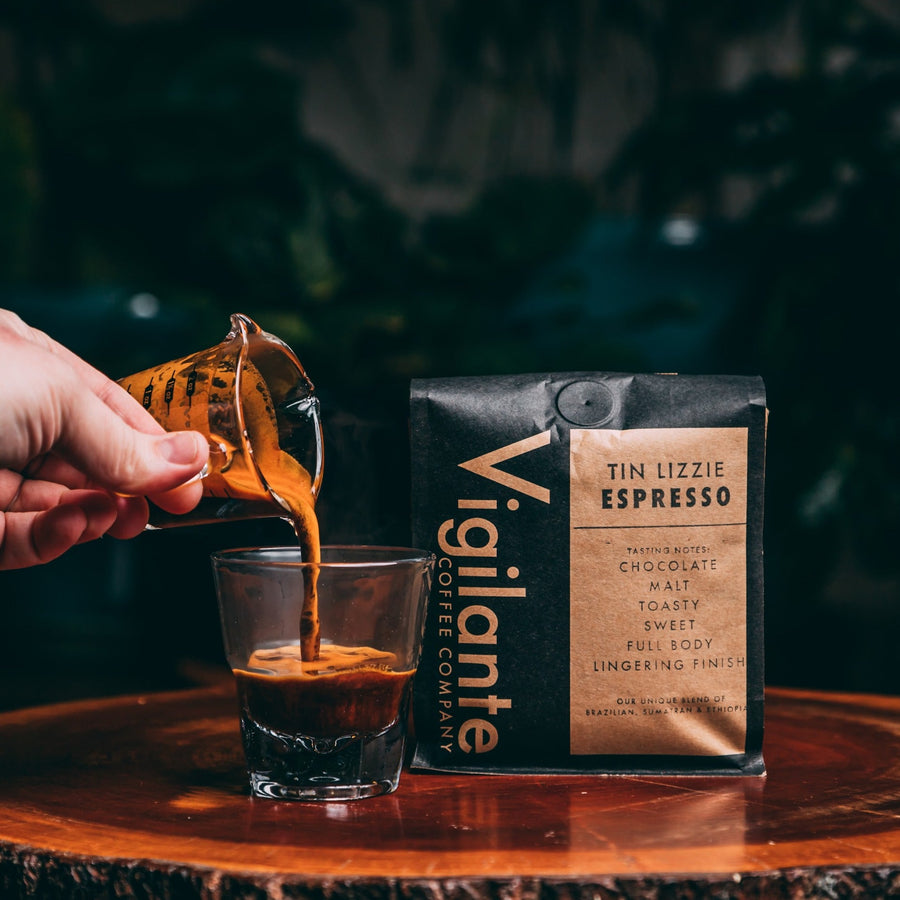How to Store SOE Single Origin Espresso for Maximum Freshness
How to Store SOE Single Origin Espresso for Maximum Freshness
Blog Article
Discovering the Abundant Tastes of Coffee Beans: a Deep Study Espresso and Blended Coffee Beans
When you check out the rich tastes of coffee beans, you uncover a complex globe where each variety brings its very own personality to your mug. Recognizing the beginnings, refining techniques, and toasting methods can transform your coffee experience. As you browse via the art of coffee and the creative thinking behind blended coffees, you'll start to value the nuances that make each sip special. What you'll discover next could change the way you enjoy your early morning brew.
The Origins of Coffee Beans: Exploring Terroir and Taste Profiles
When you take a sip of coffee, you're not just enjoying a drink; you're experiencing an abundant tapestry of tastes shaped by the beans' beginnings. Each region generates one-of-a-kind flavor profiles affected by environment, elevation, and soil. Beans from Ethiopia usually break with intense, fruity notes, while those from Colombia have a tendency to supply a balanced, nutty sweetness.
As you check out different origins, you'll discover exactly how terroir-- the ecological aspects affecting a plant-- plays a vital duty - Single Origin Espresso. The same coffee variety can taste drastically different depending on where it's grown
When you consider these variables, you begin to value the intricacy behind your mug. Each sip tells a story of the land and the farmers who nurtured the beans. So, next time you indulge, believe about the trip your coffee took prior to it reached your hands, and savor those detailed tastes that show its beginning.
Understanding Coffee: The Art and Science Behind the Mixture
When you consider coffee, it's not practically the strong flavor; it's likewise about the techniques that bring it to life. Recognizing just how various prep work methods effect preference can transform your developing experience. Allow's discover the details of espresso preparation and reveal the special taste accounts that make each mug special.
Espresso Preparation Methods
Coffee preparation is both an art and a science, integrating specific strategies with a deep understanding of coffee. To begin, you'll intend to select top notch, newly baked beans and grind them carefully for optimal extraction (Single Origin Espresso). The work size is important; as well rugged, and your espresso will certainly be weak, as well fine, and it'll be bitter
The outcome ought to be an abundant, velvety espresso with a lovely layer of crema on top. With technique, you'll understand these strategies.
Taste Accounts Discussed
The world of espresso offers an abundant tapestry of flavor accounts that can elevate your coffee experience. Light roasts frequently display intense level of acidity and vibrant tastes, while dark roasts present deeper, bolder tones.
Recognizing these profiles aids you pick the ideal coffee for your taste buds. Trying out with various blends can expose surprising mixes. For instance, a well-crafted mix may balance the brilliant notes of an Ethiopian bean with the rich, chocolatey touches of a Brazilian bean. Embrace the trip of uncovering coffee's diverse flavors, and you'll change your coffee routine into an exciting adventure.
Handling Techniques: How They Influence Taste and Fragrance
While it might appear that the origin of coffee beans is one of the most substantial consider identifying their taste and fragrance, the handling techniques used post-harvest play an equally crucial duty. You'll discover that these methods can considerably change the final preference account of your cup.
As an example, the washed procedure removes the fruit from the beans prior to fermentation, frequently causing a cleaner, brighter taste. On the other hand, the natural process leaves the fruit intact throughout drying, resulting in a sweeter, fruitier account.
Other methods, like honey processing, strike a balance, enabling some fruit mucilage to remain, supplying a distinct intricacy.
Each processing method interacts with the beans' intrinsic characteristics, enhancing or muting details flavors and scents. When you sip that coffee or blended coffee, keep in mind that the trip from cherry to mug is influenced not just by beginning but additionally by exactly how those beans were refined.
Toasting Techniques: Unlocking the Full Prospective of Coffee Beans
Roasting techniques are vital for exposing the full capacity of coffee beans, as they transform raw, eco-friendly beans into the fragrant, savory coffee you enjoy. The choice of toasting approach-- light, tool, or dark-- substantially affects flavor profiles.
You can explore roasting temperatures and times to find your perfect mixture. A slower roast at reduced temperature levels permits intricate flavors to develop, while a quicker roast can magnify resentment. Focus on the cracks throughout roasting; the very first fracture suggests a light roast, while the 2nd split signals a dark roast. By understanding these strategies, you'll expose a world of taste, raising your coffee experience to brand-new heights. Appreciate every sip, recognizing the treatment that entered into your mug!
The Magic of Blended Coffee: Creating One-of-a-kind Flavor Experiences
Creating a distinct taste experience with combined coffee can change your morning ritual right into an expedition of preference. By integrating various beans from numerous regions, you can disclose a symphony of tastes that elevate your mug to new elevations. Each blend deals an unique account, balancing body, level of acidity, and sweet taste to produce something genuinely special.
When you select a blend, read review you're not just selecting a coffee; you're picking a trip throughout varied landscapes and cultures. Trying out various combinations permits you to find your personal faves, whether you take pleasure in fruity notes or rich, chocolatey touches.

Tasting Notes: Acknowledging the Nuances in Your Cup
As you sip your coffee, you may notice a range of flavors dancing on your palate, each exposing the complexities of the beans. You might taste the bright acidity similar to citrus or the deep, rich notes akin to dark delicious chocolate. The sweetness could evoke honey or caramel, stabilizing the general account wonderfully.
Take notice of the body of the coffee-- does it really feel airy and light, or is it complete and creamy? The finish, too, uses ideas; a remaining aftertaste may hint at nuttiness or flower touches.

Don't forget to explore the unique attributes of various beginnings, as each area presents distinctive flavors - Single Origin Espresso. For instance, Ethiopian coffees commonly existing fruity notes, while Colombian beans may display an extra spherical sweet taste. By acknowledging these nuances, you'll strengthen your appreciation for each mug, raising your coffee experience to brand-new elevations

Brewing Techniques: Making The Most Of Taste Extraction for every single Bean
When you check out the various developing methods, you'll find that each strategy can considerably affect the flavor profile of your coffee. From French press to pour-over, each approach essences various substances, improving or muting particular notes. For instance, using a French press allows oils to stay in the mixture, developing a richer taste, while pour-over stresses clarity and brightness.
Temperature level and grind size likewise play vital functions. A coarser work functions best for cold brews, while a fine grind is suitable for coffee. Explore water temperature-- between 195 ° F and 205 ° F-- can disclose covert flavors, also.
Do not neglect regarding steeping time; a quick extraction can bring about sour notes, while over-extraction may produce bitterness. By adjusting these variables, this content you can make best use of flavor extraction and genuinely boost your coffee experience. Appreciate the trip of finding what method best suits your taste!
Regularly Asked Inquiries
What Is the Perfect Water Temperature Level for Developing Coffee?
The ideal water temperature level for brewing coffee's between 195 ° F and 205 ° F. If you make use of water that's also hot, you'll over-extract tastes; too cool, and you will not extract sufficient. Go for that wonderful area for the finest brew!
Exactly How Does Grind Dimension Affect Coffee Flavor?
Grind dimension significantly impacts coffee taste. Finer grinds remove a lot more flavors and oils, causing a bolder preference, while coarser grinds return a lighter taste. Adjusting work size helps you accomplish your preferred coffee profile.
Exist Health Perks Surrounding Alcohol Consumption Coffee?

What Is the Difference Between Arabica and Robusta Beans?
Arabica beans are smoother and sweeter, often featuring fruity tastes, while robusta beans are stronger with a bitter taste and higher high levels of caffeine material. You'll see these differences in aroma and developing experience.
How Can I Store Coffee Beans for Freshness?
To save coffee beans for freshness, maintain them in an airtight container, far from light, heat, and moisture. If you only grind what you need right prior to developing., you'll preserve their taste much longer.
Exploring the Rich Tastes of Coffee Beans: a Deep Dive Into Coffee and get redirected here Blended Coffee Beans.
When you check out the rich flavors of coffee beans, you uncover an intricate world where each range brings its very own personality to your cup.When you take a sip of coffee, you're not simply enjoying a beverage; you're experiencing an abundant tapestry of tastes shaped by the beans' origins.Roasting techniques are vital for exposing the complete potential of coffee beans, as they change raw, environment-friendly beans right into the fragrant, tasty coffee you enjoy.As you drink your coffee, you might see a spectrum of flavors dancing on your palate, each exposing the ins and outs of the beans.
Report this page